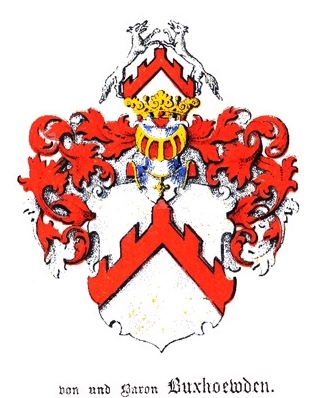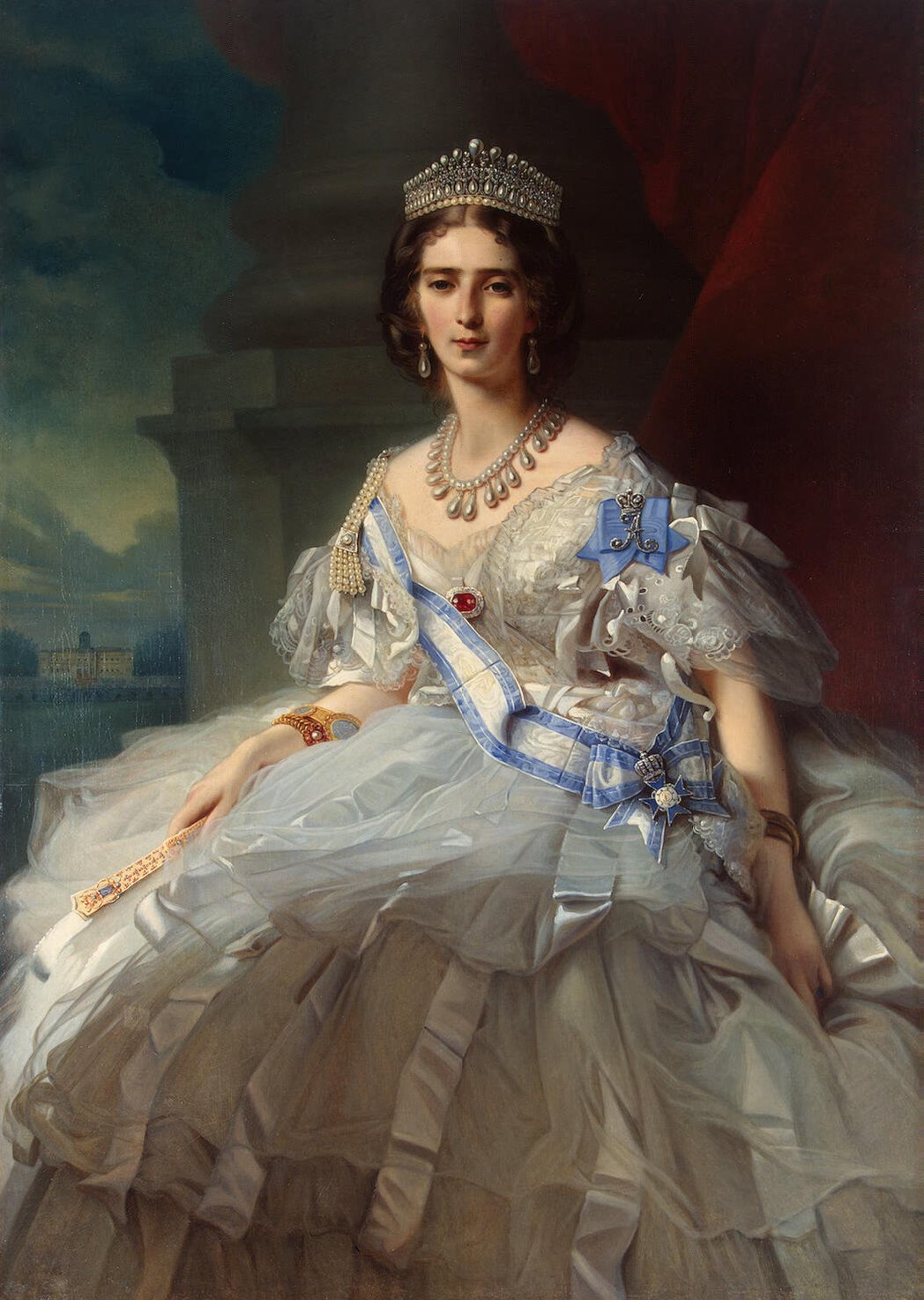|
Buxhoeveden Family
The House of Buxhoeveden was a Baltic German noble family of Lower Saxon origin in Estonia and Russian Empire, with roots tracing to Bexhövede. In Sweden, the family is considered part of the unintroduced nobility. Notable family members * Albert of Riga (1165–1229), third Bishop of Riga, founder of the Livonian Brothers of the Sword * Hermann of Dorpat (1163–1248), first Bishop of Dorpat * Reinhold von Buxhoeveden (est. 1480s-1557), was bishop of the Bishopric of Saare-Lääne from 1532 to 1541. * Friedrich Wilhelm von Buxhoevden (1750–1811), Russian Infantry General * Baroness Sophie Buxhoeveden (1883–1956), lady in waiting to Tsarina Alexandra of Russia * Arthur von Buxhoevden (1882–1964), Baltic-German military personnel (Colonel). Gallery File:Єпископ Альберт.gif, Albert of Riga on a Latvian coin. File:Buxhoevden.jpg, Friedrich Wilhelm von Buxhoeveden File:Sophie Buxhoeveden (right) and Anastasia Hendrikova.jpg, Sophie Buxhoeveden (right) w ... [...More Info...] [...Related Items...] OR: [Wikipedia] [Google] [Baidu] |
Hermann Of Dorpat
Hermann of Dorpat (or Hermann I, or Hermann von Buxhövden) (1163–1248) was the first Prince-Bishop of the Bishopric of Dorpat (1224–1248) within the Livonian Confederation. Biography Hermann hailed from Bexhövede (now a part of Loxstedt, Lower Saxony) in the Duchy of Saxony, and was also known as "Hermann of Buxhoeveden" and other variations, such as Buxhöwden and Buxthoeven. He was the brother of Bishop Albert of Riga, who used his influence against King Valdemar II of Denmark to place the Livonian Brothers of the Sword in medieval Estonia. From 10 April 1220 – 21 July 1224, Hermann was the Bishop of Leal (Lihula), after which he took over the Bishopric of Dorpat. Hermann founded the cathedral of Tartu (Dorpat) and led the Roman Catholic crusading army in the 1242 Battle of the Ice, which was won by the Russian Orthodox Alexander Nevsky of Novgorod. It has also been suggested that he founded the Raseborg Castle at the southern coast of Finland. Legacy Her ... [...More Info...] [...Related Items...] OR: [Wikipedia] [Google] [Baidu] |
Countess Anastasia Hendrikova
Countess Anastasia Vasilyevna Hendrikova (23 June 1887 – 4 September 1918), was a lady in waiting at the court of Tsar Nicholas II and Tsarina Alexandra. She was arrested by the Bolsheviks and shot to death outside Perm in the autumn of 1918. Like the Romanovs and their servants who were killed on 17 July 1918, Hendrikova and Catherine Adolphovna Schneider, the elderly court tutor who was killed with her, were canonized as martyrs by the Russian Orthodox Church Outside Russia in 1981. Biography Anastasia, who was nicknamed "Nastenka," was the daughter of Count Vassili Alexandrovich Hendrikov, Grand Master of Ceremonies of the Imperial Court, and his wife, Princess Sophia Petrovna Gagarine. She was a member of the Russian nobility as part of the Hendrikov Family. She was a descendant of the sister of Catherine I of Russia, the wife of Peter the Great. Hendrikova was appointed a lady of waiting in 1910. She acted as a "sort of unofficial governess" to the four grand duches ... [...More Info...] [...Related Items...] OR: [Wikipedia] [Google] [Baidu] |
Arthur Von Buxhoevden
Peter Eugen Arthur Baron von Buxhoeveden (28 March 1882 Muratsi manor, Saare County – 27 September 1964 Karlsruhe) was a Baltic-German military colonel who served in the forces of the Imperial Russian Army and Estonia. He graduated from Kuressaare Gymnasium and Tver Cavalry School (). He participated on World War I, being an officer for Czarist Russia. 1918 he entered into Saaremaa Defence Forces (). He participated on Estonian War of Independence, fighting for Estonia. From 1920 until 1928, he was the commander of Cavalry NCOs' School (). In 1928 he retired. In 1939, he moved to Germany and died in Karlsruhe in 1964. On 12 September 2014, the ashes of von Buxhoevden and his wife Kira (''née'' Scheidemann) were buried in the Defence Forces Cemetery of Tallinn. von Buxhoevden was one of the leading persons to advance the integration of Baltic Germans into Estonian society. Awards * 1920: Cross of Liberty, I class II rank. * 1925: Order of Lāčplēsis The Order of Lā� ... [...More Info...] [...Related Items...] OR: [Wikipedia] [Google] [Baidu] |
Lady In Waiting
A lady-in-waiting or court lady is a female personal assistant at a court, attending on a royal woman or a high-ranking noblewoman. Historically, in Europe, a lady-in-waiting was often a noblewoman but of lower rank than the woman to whom she attended. Although she may either have received a retainer or may not have received compensation for the service she rendered, a lady-in-waiting was considered more of a secretary, courtier, or companion to her mistress than a servant. In other parts of the world, the lady-in-waiting, often referred to as ''palace woman'', was in practice a servant or a slave rather than a high-ranking woman, but still had about the same tasks, functioning as companion and secretary to her mistress. In courts where polygamy was practised, a court lady was formally available to the monarch for sexual services, and she could become his wife, consort, courtesan, or concubine. ''Lady-in-waiting'' or ''court lady'' is often a generic term for women whose re ... [...More Info...] [...Related Items...] OR: [Wikipedia] [Google] [Baidu] |
Sophie Buxhoeveden
Sophie Freiin von Buxhoeveden (russian: София Карловна Буксгевден, tr. ; September 6, 1883 – November 26, 1956), also known as Baroness Sophie Buxdoeveden, was a Baltic German Lady-in-waiting, in service to Tsarina Alexandra of Russia. She was the author of three memoirs about the imperial family and about her own escape from Russia. In her book ''Before the Storm'', Sophie describes a side of old Russia seldom seen elsewhere, a family in the old-fashioned provincial country life of the gentry in the years before the revolution. As a child, Sophie shared picnics and mushroom hunts with other famous players in the story such as Anna Vyrubova, Felix Yussupov, Dmitri Pavlovich and the sons of poet Konstantin Romanov. Early life According to her memoirs, Buxhoeveden's father, Baron Karlos Matthias Konstantin Ludwig Otto von Buxhoeveden (1856-1935), was the Russian minister in Copenhagen, Denmark during World War I. Her mother was Lyudmila Petrovna Osokin ... [...More Info...] [...Related Items...] OR: [Wikipedia] [Google] [Baidu] |
Friedrich Wilhelm Von Buxhoevden
Friedrich Wilhelm Graf von Buxhoevden (russian: Фёдор Фёдорович Буксгевден, ''Fyodor Fyodorovich Buksgevden''; other spellings: ''Feodor Buxhoeveden'', ''Buxhœwden'', ''Buxhöwden'') (September 14, 1750 Võlla, Governorate of Livonia – August 23, 1811 near Kullamaa) was a Russian infantry general and government official. Buxhoeveden commanded the Russian armies during the Finnish War. Family The Buxhoevedens, a Baltic German family from Estonia, traced their roots to Bexhövede in Lower Saxony. Buxhoevden's wife, countess Natalia Alexeyeva, was the illegitimate daughter of Grigory Orlov (1734–1783) by a lady of the court, but her mother – contrary to some claims – was not the Empress Catherine, but a member of the Apraksin family. Buxhoeveden's granddaughter Varvara Nelidova was a mistress of Nicholas I of Russia (1796–1855) for 17 years (1832–1855). Career In 1805 Buxhoevden took part in the Battle of Austerlitz as a commander, co ... [...More Info...] [...Related Items...] OR: [Wikipedia] [Google] [Baidu] |
Bishopric Of Ösel–Wiek
The Bishopric of Ösel–Wiek ( et, Saare-Lääne piiskopkond; german: Bistum Ösel–Wiek; Low German: ''Bisdom Ösel–Wiek''; contemporary la, Ecclesia Osiliensis) was a Roman Catholic diocese and semi-independent prince-bishopric (part of Terra Mariana, i.e. Livonia) in the Holy Roman Empire, covering what are now Saare, Hiiu, Lääne counties and the western part of Pärnu county of Estonia. History The bishopric was created on 1 October 1228 as a Latin rite, and initially possibly exempt, diocese by papal legate William of Modena and simultaneously as a state of Holy Roman Empire—making it a prince-bishopric—by Henry, King of the Romans (1220-1242; not Emperor). Due to the repeated shift of the seat of the bishops, it was also successively known as bishopric of Leal (Lihula) from 1234, Perona (Vana-Pärnu) from 1251, Hapsal (Haapsalu) Castle from 1279, and the seat shifted (alone) to the castle of Arensburg (Kuressaare) on the island of Ösel (Saaremaa); t ... [...More Info...] [...Related Items...] OR: [Wikipedia] [Google] [Baidu] |
Reinhold Von Buxhoeveden
Reinhold von Buxhoeveden (died 1557) was bishop of the Bishopric of Saare-Lääne or Ösel–Wiek ( et, Saare-Lääne piiskopkond; german: Bistum Ösel–Wiek; Low German: ''Bisdom Ösel–Wiek''; contemporary la, Ecclesia Osiliensis), a semi-independent Roman Catholic prince-bishopric in what is now Saare, Hiiu and Lääne counties of Estonia, from 1532 to 1541. He was the second member of the Buxhoeveden family to serve as bishop of Saare-Lääne. Buxhoeveden is believed to have been born in the early 1480s and matriculated into Rostock University in 1501. In 1506 he was awarded a Master of Arts (''magister artiumi'') degree with canonical rights. He proceeded to prepare for a career in the religious ministry, and had the fortune of being accepted as a ministerial candidate in Rome. It is not known how long he was in Rome, but upon his departure he was named canon of Tartu and Saare-Lääne dioceses, and no later than 1519 he returned to Livonia. There he was named bishop o ... [...More Info...] [...Related Items...] OR: [Wikipedia] [Google] [Baidu] |
Livonian Brothers Of The Sword
german: Schwertbrüderordenfrench: Ordre des Chevaliers Porte-Glaive , image= , caption= , dates=1204–1237 , country= Terra Mariana , allegiance= Catholic Church , garrison= Wenden (Cēsis), Fellin (Viljandi), Segewold (Sigulda). Ascheraden (Aizkraukle), Goldingen (Kuldīga), Marienburg (Alūksne), Reval (Tallinn), Weißenstein (Paide) , battle_honours=Livonian Crusade , notable_commanders= The Livonian Brothers of the Sword ( la, Fratres militiæ Christi Livoniae, german: Schwertbrüderorden) was a Catholic military order established in 1202 during the Livonian Crusade by Albert, the third bishop of Riga (or possibly by Theoderich von Treydend). Pope Innocent III sanctioned the establishment in 1204 for the second time. The membership of the crusading order comprised warrior monks, mostly from northern Germany, who fought Baltic and Finnic "pagans" in the area of modern-day Estonia, Latvia and Lithuania. Alternative names of the Order include Christ Knights, Swo ... [...More Info...] [...Related Items...] OR: [Wikipedia] [Google] [Baidu] |
Baltic German
Baltic Germans (german: Deutsch-Balten or , later ) were ethnic German inhabitants of the eastern shores of the Baltic Sea, in what today are Estonia and Latvia. Since their coerced resettlement in 1939, Baltic Germans have markedly declined as a geographically determined ethnic group. However, it is estimated that several thousand people with some form of (Baltic) German identity still reside in Latvia and Estonia. Since the Middle Ages, native German-speakers formed the majority of merchants and clergy, and the large majority of the local landowning nobility who effectively constituted a ruling class over indigenous Latvian and Estonian non-nobles. By the time a distinct Baltic German ethnic identity began emerging in the 19th century, the majority of self-identifying Baltic Germans were non-nobles belonging mostly to the urban and professional middle class. In the 12th and 13th centuries, Catholic German traders and crusaders (''see '') began settling in the eastern ... [...More Info...] [...Related Items...] OR: [Wikipedia] [Google] [Baidu] |
Albert Of Riga
Albert of Riga or Albert of Livonia or Albrecht (german: Albert von Buxthoeven, lv, Alberts fon Buksthēvdens; c.1165 – 17 January 1229) was the third Bishop of Riga in Livonia. In 1201 he allegedly founded Riga, the modern capital of Latvia, and built the city's cathedral in 1221. Albert headed the armed forces that forcibly converted the eastern Baltic region to Catholic faith, in the nature of a crusade that was undertaken while the Fourth Crusade was sacking the Christian Byzantine capital of Constantinople. Early life Albert was born in Bexhövede, a part of Loxstedt, Lower Saxony, Germany. He and his brother Hermann were members of the powerful Buxhoeveden family from Bexhövede. Because of this he has also been known as Albert of Buxhoeveden (or ''Bexhövede'', ''Buxhövden'', ''Buxhöwde'', ''Buxthoeven'', ''Appeldern''). Albert was a canon in Bremen when his uncle Hartwig, Archbishop of Bremen and Hamburg, named him Bishop of Livonia, provided that he ... [...More Info...] [...Related Items...] OR: [Wikipedia] [Google] [Baidu] |



